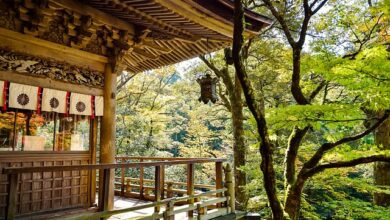How to Avoid Tourist Traps in Popular Destinations

Traveling to popular destinations can be exhilarating, offering a chance to explore iconic landmarks, immerse yourself in vibrant cultures, and create unforgettable memories. However, these hotspots often come with their fair share of tourist traps—overpriced restaurants, crowded attractions, and inauthentic experiences designed to capitalize on unsuspecting visitors. The good news? With a little planning and insider knowledge, you can sidestep these pitfalls and enjoy a more authentic, enriching, and budget-friendly trip. Here’s how to avoid tourist traps in popular destinations.
1. Research Before You Go
Why It Matters:
Pre-trip research is your first line of defense against tourist traps. Understanding the destination’s layout, local customs, and hidden gems will help you make informed decisions.
Tips:
- Read Reviews Wisely: Use platforms like TripAdvisor, Google Reviews, or Yelp—but focus on detailed reviews rather than just star ratings. Look for comments from locals or frequent travelers.
- Identify Overhyped Attractions: Some famous landmarks are worth visiting, but others may not live up to the hype. Prioritize based on your interests.
- Learn Local Etiquette: Familiarize yourself with cultural norms to blend in and avoid being targeted as a tourist.
2. Venture Beyond the Main Tourist Areas
Why It Matters:
Popular attractions are often surrounded by overpriced shops, mediocre restaurants, and pushy vendors. Straying off the beaten path allows you to discover authentic experiences.
Tips:
- Explore Neighborhoods: Instead of sticking to the city center, wander into residential areas where locals live and work. These neighborhoods often have better food, unique boutiques, and fewer crowds.
- Visit Lesser-Known Sites: Seek out underrated landmarks or alternative attractions. For example, instead of the Eiffel Tower in Paris, consider Parc des Buttes-Chaumont for stunning views without the lines.
- Take Public Transport: Using buses, trains, or subways gives you a glimpse of daily life and takes you to places beyond the typical tourist routes.
3. Eat Like a Local
Why It Matters:
Tourist-heavy areas are notorious for overpriced, low-quality meals. To truly savor the flavors of your destination, eat where the locals do.
Tips:
- Avoid Restaurants Near Major Attractions: These spots often inflate prices and compromise on quality. Walk a few blocks away to find better options.
- Look for Local Favorites: Keep an eye out for busy eateries filled with locals. Long lines or packed tables are usually a good sign.
- Try Street Food: In many countries, street food offers delicious, affordable, and authentic dishes. Just ensure hygiene standards are met.
- Ask Locals for Recommendations: Strike up conversations with residents or hotel staff to get insider tips on the best places to eat.
4. Skip the Overpriced Souvenirs
Why It Matters:
Souvenir shops near major attractions often sell mass-produced trinkets at inflated prices. Instead, seek out meaningful, locally made items that support artisans and communities.
Tips:
- Shop at Markets or Artisan Shops: Visit local markets, craft fairs, or independent stores for unique, high-quality souvenirs.
- Bargain Smartly: In some cultures, haggling is expected. Do so respectfully and aim for a fair price.
- Buy Practical Items: Opt for items you’ll actually use, such as spices, textiles, or handmade jewelry, rather than cheap knick-knacks.
5. Avoid Overpriced Guided Tours
Why It Matters:
While guided tours can enhance your experience, many operators cater exclusively to tourists and charge exorbitant fees for lackluster service.
Tips:
- Book Through Reputable Companies: Research companies with excellent reviews and transparent pricing.
- Consider Self-Guided Options: Use apps like Google Maps, Rick Steves Audio Guides, or GPSMyCity to explore independently.
- Join Free Walking Tours: Many cities offer free walking tours led by knowledgeable guides who work for tips. This is a great way to learn about the destination without breaking the bank.
6. Be Cautious with Transportation Scams
Why It Matters:
Unscrupulous taxi drivers, tuk-tuk operators, or unofficial “guides” may take advantage of tourists by charging excessive fares or leading them to commission-based shops.
Tips:
- Use Ride-Sharing Apps: Services like Uber, Grab, or Bolt provide fixed rates and eliminate negotiation hassles.
- Agree on Fares in Advance: If using traditional taxis, confirm the fare before starting your journey or insist on using the meter.
- Walk When Possible: In compact cities, walking not only saves money but also lets you soak in the atmosphere.
7. Time Your Visits Strategically
Why It Matters:
Peak hours and seasons attract larger crowds and higher prices. By timing your visits wisely, you can enjoy popular attractions in relative peace.
Tips:
- Visit Early or Late: Arrive at landmarks right when they open or later in the afternoon to avoid long lines. Seasons:** Consider traveling during shoulder seasons (spring or fall) for better weather, fewer tourists, and lower costs.
- Skip Weekends: Many attractions are busier on weekends due to local visitors. Plan your itinerary around weekdays if possible.
8. Stay in Boutique or Local Accommodations
Why It Matters:
Chain hotels and resorts in tourist zones often lack character and come with hefty price tags. Staying in smaller, locally owned properties provides a more personalized and authentic experience.
Tips:
- Choose Guesthouses or B&Bs: These accommodations often offer warm hospitality and insider tips from hosts.
- Use Alternative Platforms: Websites like Airbnb, Vrbo, or boutique hotel aggregators can connect you with unique stays.
- Stay Outside the City Center: Opt for lodgings in quieter neighborhoods, which are typically cheaper and less crowded.
9. Learn Basic Phrases in the Local Language
Why It Matters:
Speaking even a few words in the local language shows respect and helps you connect with residents, who may then steer you toward genuine experiences.
Tips:
- Master Key Phrases: Learn greetings, polite expressions, and essential questions like “Where do locals eat?”
- Use Translation Apps: Tools like Google Translate or Duolingo can bridge communication gaps.
- Carry a Phrasebook: For destinations with less common languages, a small phrasebook can be invaluable.
10. Trust Your Instincts
Why It Matters:
Sometimes, your gut feeling is the best guide. If something feels too good to be true or overly pushy, it probably is.
Tips:
- Be Skeptical of Unsolicited Offers: Whether it’s a “free” tour or a “special deal,” always verify legitimacy before committing.
- Walk Away if Pressured: If a vendor or guide becomes aggressive, politely decline and move on.
- Stick to Your Plan: Don’t let persuasive sales tactics derail your carefully planned itinerary.




